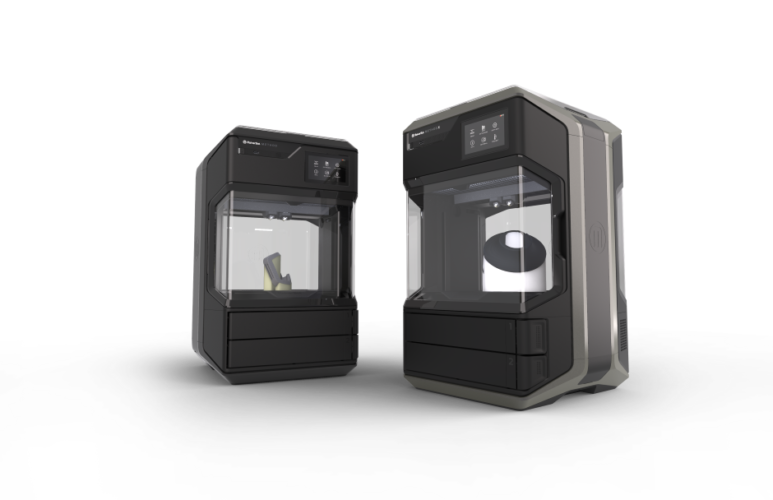Continuous improvement (CI) is not a new phenomenon. Its roots can be traced back to the just-in-time production methods enshrined by Toyota Production Systems in the 1990s. The process has been fine-tuned over time, but the fundamental principle remains the same: in order to create a competitive advantage, organisations should focus on making small, incremental improvements as rapidly as possible, instead of relying on large-scale changes that can be costly and disruptive to implement.
3D printing: breaking the mould
It is against this backdrop that 3D printing is emerging as an increasingly important tool for implementing CI initiatives. CI is all about acting quickly and being agile in order to implement improvement, and 3D printers offer a perfect tool for rapid implementation of physical improvements. However, despite the growing number of manufacturers already using 3D printers for rapid prototyping and final part production, the technology is often underutilised as a means of implementing CI initiatives.
This is largely due to the way the market has developed, polarised between industrial machines at one end and desktop units at the other. Industrial-grade 3D printers have high levels of accuracy and reliability, and leverage real engineering-grade materials, but they are expensive and require a skilled technician to operate them. Desktop models are lower in cost, but are also more prone to part defects, only support a limited range of materials, and typically require an operator with knowledge of the technology in order to achieve satisfactory results.
Comment: How COVID has accelerated additive adoption
In the past few years, however, this has been changing with the arrival of new 3D printing solutions that bridge the price-performance gap that has existed in the industry, making industrial-grade printing accessible to a much wider range of engineers and manufacturers, while also maintaining the competitive price point and, crucially, ease-of-use of traditional desktop machines.
Accelerating CI implementation, and cutting costs
The biggest step change is the speed at which continuous improvement initiatives can be implemented using 3D printers. Traditionally, even a simple change – for example, producing a piece of tooling – would be a several step process, involving multiple people from within an organisation, and often external suppliers. 3D printing changes the game. Suddenly, the individual who identified the opportunity to improve production efficiency is able to develop a solution and implement it without even leaving the shop floor.
Additionally, with 3D printers, workers can design and print products that exactly meet the needs of the process. This is a significant leap forward compared to the current approach of ordering a standard part that most closely matches their requirements and hoping for the best.

The cost to produce customised or low volumes of parts is also significantly lower when using a 3D printer compared to traditional manufacturing processes. For CI implementation, this opens up opportunities to produce bespoke factory floor tools which can significantly help improve workflow. Kitting trays are a good example of this, as they provide a useful form of fault finding, but are typically not viable to produce using traditional manufacturing processes due to cost unless purchased in high volumes.
Custom robotics solutions provider, All Axis Robotics, provides a great example of the efficiencies that can be achieved using a 3D printer to implement CI initiatives. The company has significantly reduced the time it takes to produce custom parts, including robotic arm end effectors, and tooling since installing MakerBot METHOD 3D printers within its production facility.
Previously, it had to rely on external suppliers to produce the parts, resulting in additional costs and long wait times. The ability to create custom solutions for customers — combined with rapid turnaround times — has helped the company to gain a competitive advantage against competitors as more manufacturing facilities upgrade new and legacy equipment.
Reducing production downtime
The ability of 3D printers to produce parts rapidly and on-demand, is also helping manufacturers to stamp down on production downtime – one of the biggest sources of waste in any manufacturing facility. For automotive manufacturers, for example, the cost of unplanned downtime is estimated to be a staggering $22,000 per minute. The ability to 3D print parts on-site and on-demand – for example in response to a part failure – ensures that manufacturers can get processes up and running in a matter of hours, compared to days or even weeks if they have to source parts externally.
Implementing change with 3D printing
Based on feedback from customers, we know that in many cases the benefit of introducing a 3D printer can be immediate, with manufacturers often able to justify the purchase of 3D printers with a single use. However, once they realise the diverse benefits that can be achieved using 3D printing, they quickly begin to identify other applications whereby the technology can be deployed to further improve existing processes, resulting in even greater workflow optimisation, cost savings and more flexible production.
Dave Veisz, VP Engineering at MakerBot


Red Bull makes hydrogen fuel cell play with AVL
Formula 1 is an anachronistic anomaly where its only cutting edge is in engine development. The rules prohibit any real innovation and there would be...